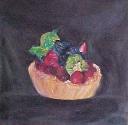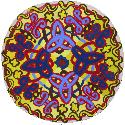
Learn foreign languages while watching your favorite YouTube videos!
The Language learning app is a handy set of tools that will help you improve your language skills by accessing subtitles, a built-in dictionary, and saving words and phrases you want to learn to revise.
Learning foreign languages will be an interesting and exciting experience for you!
How to Write An Artist's Statement:
The first question is What is an artist's statement? And the second question is Why do you need one? To answer the second question first, perhaps a gallery has requested a statement from you or you're preparing a new brochure or r?sum? and think such a statement is required. Then you have to tackle the first question--what is it and what should be included in it?
Your artist's statement can be anything you want it to be, but primarily, it should help potential buyers, students or employers to understand what you believe to be the most important aspects of your art and the techniques you use to make it. The statement should summarize these things in as few words as possible, preferably short ones, and not be a lengthy dissertation on your place in the future history of art. A paragraph of three or four sentences should do it. You won't keep your readers much longer than that.
Once you've determined that you need an artist's statement, don't expect to come up with the pithy phrase or statement in one sitting. The time you spend in developing a worthwhile statement is invaluable in helping you define your art for yourself. You may not have given this much thought before. Do some brainstorming or journaling on these questions, as though you were interviewing yourself:
Why do you like to make art?
What subjects do you prefer? Why?
What processes and techniques do you use? Why?
How is your work different from others?
What do you see in your artwork?
What do other people say they see?
What are your goals and aspirations as an artist?
Who or what inspires you?
Enlist the aid of a trusted friend and do some brainstorming. Don't analyze, just put it down and keep adding to the lists. Once you have a good start, start comparing one thought to another and decide which one grabs you. Throw the other one out. Keep comparing and eliminating until you have three or four main ideas that express the essence of your artistic purpose. Your statement should be short, clear, understandable, not over-stated, and not too mystical or spiritual. Everything in your statement should be relevant to your art.
Some say you don't need an artist's statement because your paintings should speak for themselves, but remember that those potential buyers, students and employers may not have access to your artwork. So your artist's statement may be your only way of making a good first impression that convinces others they want to do business with you.
Take a look at my artist's statement
http://www.nitaleland.com/bio.htm#statement
Biography: How to Write an Artist's Bio:
Your biography is the hint at the story of your life, not so much your art, but YOU. Where and when were you born, who are your parents (were they artists?), where and how did you grow up?
What led you to an artistic path? Some artists do not want to share personal information with the public.
How much you do is YOUR CHOICE! So what is the purpose of the artist's bio? It is to help the artist make a human connection to potential buyers. People connect with one another in many ways, but
sometimes it is simply, "Oh, you are from Costa Mesa? My parents grew up there!" or "You are one of 6 kids? Me, too!" or "You grew up as a military brat? Well, I have traveled a lot, too." Your bio need not to be long; bonus points for relevancy to your art career.
Country: United States
E-mail: jmckeon@nmusd.us
Site: Mrs. McKeon- Newport Harbor High


